#masterless samurai
Explore tagged Tumblr posts
Text
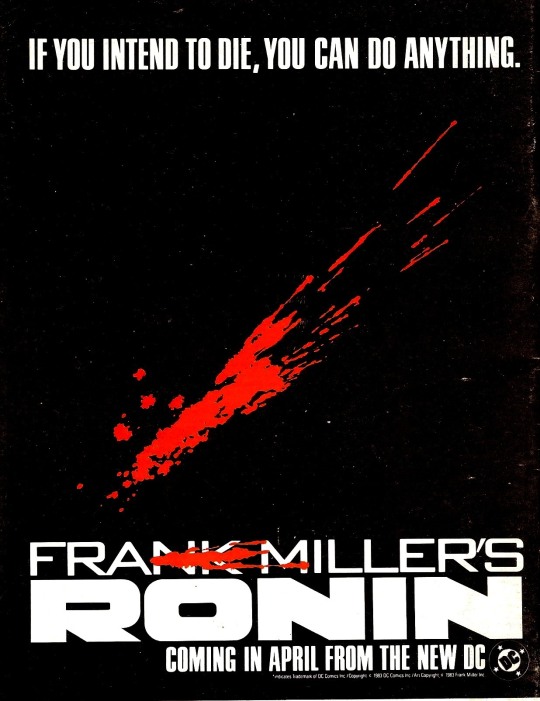
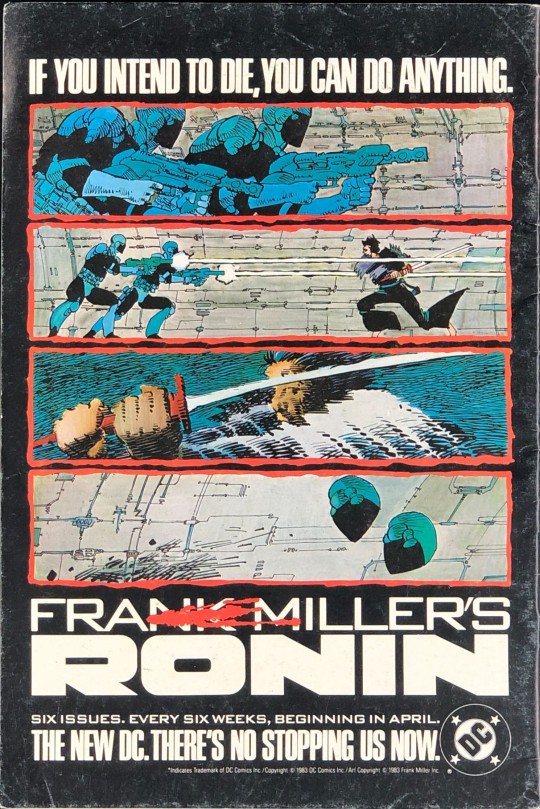
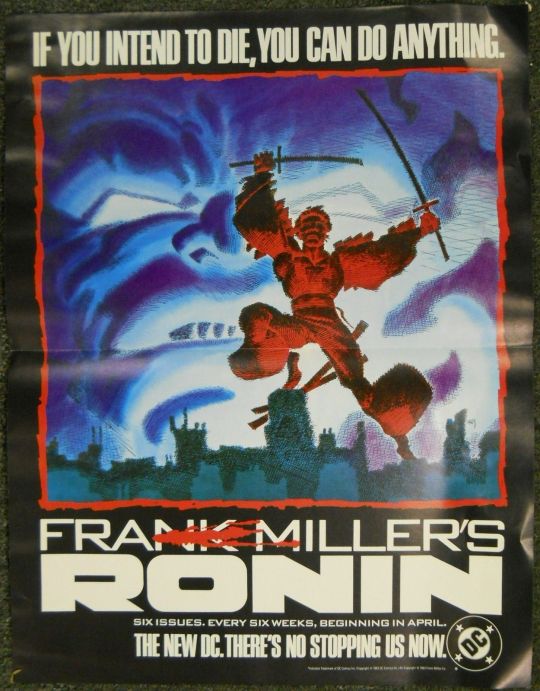
"I WAS A YOUNG CARTOONIST AND A PIG IN SHIT AT THE SAME TIME... I WAS JUST BATHING IN ALL THESE INFLUENCES...."
PIC(S) INFO: Spotlight on assorted house ads for Frank Miller's "Ronin" (Rōnin), the cyberpunk comic book limited series published by DC Comics between 1983 and 1984. The series was written and drawn by the aforementioned Miller with artwork painted by Lynn Varley.
ZACK SNYDER: "...Now, do you feel like when you did Ronin, were you just starting to push the boundaries? Like you said, "Daredevil" was kind of getting to do the work you wanted to do, but then I feel like with "Ronin" there's this kind of like, “Here's what’s going on inside my head,” kind of a vibe."
FRANK MILLER: "Oh, absolutely, but I'll tell you... it was another thing, which is, it was me going crazy over having discovered within a very short period of time both "The Lone Wolf and Cub" series by Kojima Goseki and the work of Moebius and others. I was a young cartoonist and a pig in shit at the same time. I was just bathing in all these influences and I threw them all into "Ronin.""
Sources: www.inverse.com/entertainment/frank-miller-zack-snyder-interview, https://forum.sanctuary.fr/t/page-s-de-pub/185608/246?page=9, HipComic, & Pinterest.
#Ronin#Rōnin 1983#American Style#Comics#80s Style#Manga#Manga Style#Japanese Style#Bande dessinée#Frank Miller Artist#House Ads#Illustration#Comic Books#DC Universe#1984#Welcome to 1984#DC House Ads#Cyberpunk#Advertisements#Adverts#1980s#80s#1983#Rōnin 1984#Frank Miller#DC Comics#Rōnin#DC#Frank Miller Art#Masterless Samurai
0 notes
Text

🎬🎬 Seven Samurai (1954), directed by Akira Kurosawa, is a groundbreaking Japanese epic that redefined the action and ensemble genres. Set in 16th-century Japan, the film tells the story of a small, impoverished village constantly raided by bandits. Desperate for protection, the villagers hire seven ronin (masterless samurai) to defend their home in exchange for food.
Led by the wise and noble Kambei (Takashi Shimura), the samurai assemble a diverse group, each with unique skills and personalities, including the boisterous and unpredictable Kikuchiyo (Toshiro Mifune). Despite their initial reluctance, the warriors bond with the villagers, teaching them how to fight and preparing them for the impending battle.
Kurosawa masterfully blends themes of honor, sacrifice, and human resilience with intense character development. The film’s three-hour runtime immerses viewers in the lives of both the villagers and the samurai, creating emotional stakes that build toward the climactic showdown. The final battle, fought in rain-soaked fields, is a stunning display of Kurosawa’s dynamic cinematography and meticulous choreography.
Seven Samurai is more than an action film; it’s a meditation on class struggles, duty, and the fleeting nature of heroism. While the samurai succeed in saving the village, they lose four of their own, and Kambei poignantly remarks, “We have survived again. The victory belongs to the peasants, not to us.”
Hailed as one of the greatest films ever made, Seven Samurai has influenced countless filmmakers and genres, including its famous Hollywood remake, The Magnificent Seven. With its timeless story, richly drawn characters, and innovative filmmaking, Kurosawa’s masterpiece remains a cornerstone of world cinema.
71 notes
·
View notes
Text
Auron, Seppuku, and Holding Onto Hope
A mini-analysis of Final Fantasy X’s potential symbolic depiction of ritual suicide and its insights into Auron’s character. Spoilers.

For the purposes of this analysis, I first need to explain the ritual of seppuku, barring any details that are otherwise irrelevant:
In simple terms, a samurai, sitting in a kneeling position, took a blade to his lower abdomen and disemboweled himself with a horizontal slice. Then, a kaishakunin—an attendant of the rite—beheaded the samurai from behind, or performed kaishaku, in the interest of preventing prolonged suffering. (Note that there are a few important details I left out that will be important later.)
It’s no secret that Auron is, for all intents and purposes, a samurai (and a rōnin after death). His design was based heavily on late actor Toshiro Mifune, he wields a katana, one of his overdrives is called Bushido—even Auron’s status as an unsent is symbolic of his status as a samurai. An excerpt from Yamamoto Tsunetomo’s Hagakure: The Book of the Samurai states:
“And every day without fail one should consider himself as dead.”
No more needs to be said. Auron is a samurai, and many of his behaviors and moves are references to either samurai media or real world samurai history.
That said, I believe that the circumstances of Auron’s death and state of un-death as an unsent tie heavily into his status as a samurai, and that one scene in particular mirrors seppuku.
Honor is one of the primary tenets of Bushidō, or the samurai moral code; to dishonor oneself was, for a samurai, worse than death, so much so that samurai often chose ritual suicide as a means to regain it.
It is, again, no secret that Auron feels an incredible amount of self-loathing and shame about his inability to prevent Braska and Jecht from dying. His struggle as a younger man to find another way for them to defeat Sin without the Final Summoning was immense, and upon his failure after Braska’s defeat of Sin, he, with no regard for his own life, crossed the Calm Lands, climbed up and down Mt. Gagazet, and stormed Yunalesca in Zanarkand in an attempt to honor their deaths, and was killed in the process. This alone functions as an indirect form of suicide, living up to the ideals of Bushidō (namely, “death before dishonor”), but there is more to it, I think.
We have reason to believe that Auron saw Braska as his master. I don’t think he refers to Braska as Lord Braska in the English dub by any mistake or whim of the localizers; historically, samurai fought in service to a lord. With that said, consider the following excerpt from (again) Yamamoto Tsunetomo’s Hagakure: The Book of the Samurai.
“Meditation on inevitable death should be performed daily. Every day when one’s body and mind are at peace, one should meditate upon (…) committing seppuku at the death of one’s master.”
To be clear, I don’t think he literally commits seppuku. Earlier, I mentioned that I left out a few details regarding seppuku, and now I can finally discuss what all of this has been leading up to.
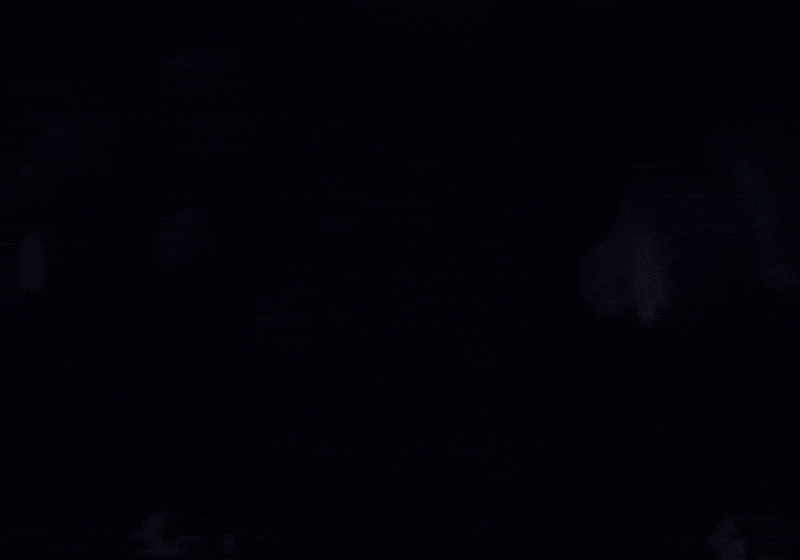
Before having a kaishakunin in attendance became the standard, samurai would silently endure the pain of bleeding to death, or he would remove the blade from his abdomen, and either slice his throat, or fall onto it from a standing position, piercing himself in the heart.
The scene above is the moment Auron lost. Braska and Jecht just agreed to die, and he had been utterly unable to stop them. This is the moment he became both dishonored and masterless at once.
I believe this shot is a metaphor for the agony and emotional intent of seppuku.
As the ritual evolved and became institutionalized as a form of punishment, in many cases, it became completely unnecessary for the samurai to stab himself; simply reaching for the blade would trigger kaishaku. That said, notice the framing of the last shot; you can see present Auron unsheathing his blade as his past self falls into a kneeling position.

In this shot, Auron lashes out at the vision of his past self, swinging his blade in a swift, lethal motion that would have beheaded him, much like kaishaku.
I believe this shot is a metaphor for the physical aspect of seppuku: the agony of dishonor, and the mercy and swiftness of the beheading that follows.
…But he didn’t.
He couldn’t behead himself. No matter how hard he swung his blade, he could not end his own agony. And, historically, failing to properly carry out kaishaku held consequences as well, according to Tsunetomo:
“From ages past it has been considered an ill-omen by samurai to be requested as kaishaku. (…) Further, if one should blunder, it becomes a lifetime disgrace.”
“And the cycle went on.”
This scene, as a whole, is, in my opinion, symbolic of Auron’s feelings of dishonor, guilt, and suicidality. Indeed, this scene is an abstract depiction of an attempt at seppuku; of Auron’s desire to regain his honor.
…But these urges do not define him. They are merely his darkest.
Despite their intensity, he manages to overcome the urge to die and be free of pain, choosing instead to live and fight his sorrow.
Yunalesca may have given Spira a false hope to cling to, but I believe Auron found real hope. Whether it’s hope in the new generation, hope in the resilience of Spira’s denizens, or hope in the possibility of finding another way to defeat Sin and honor the fallen in ways that don’t involve dying, I don’t know.
Regardless, I believe Auron continued living because he had hope. Real hope.
#using proper capitalization because the topic is pretty serious#sorry this ends so abruptly#final fantasy x#auron#my post
32 notes
·
View notes
Text
So I guess this is a good time to do a recap of some old Ukitake posts: [1][2][3][4][5][6]
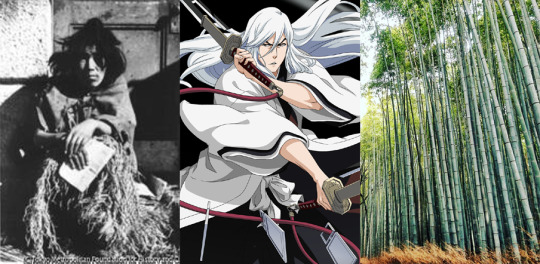
Ukitake[浮竹] Juushirou[十四郎] actually has one of my favorite names in the series as it feels like it says a lot about his core concept beyond what we're really given in canon. The family name reads uki-[浮]: "Floating" and take-[竹]: "Bamboo." That same "floating" is part of the word fuurou[浮浪]: "vagrant/vagabond" and a few other colloquial terms, a generally circling around a homeless person or a drifter. (In fact the other half of that compound word, [浪] is the "wave" in ronin[浪人]: "wave man/person" as in a masterless samurai.) Bamboo being a staple lumber in Japan of course but also notorious for its fast and rampant growth, as it is quick to spread and choke out other plants in an environment. The idea of "floating..." or "vagrant bamboo" gives an impression of being plentiful and common, even excessive.
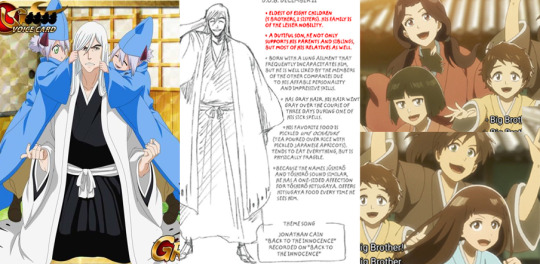
The personal name, Juushirou[十四郎] just reads "14(th) Son" which always implied he came from a large family. A profile in the back of vol. 18 long ago confirmed he had brothers and sisters, but curiously all younger than him. The implication seemed clear that as a sickly person from a big family, he was poor and that there were 13 prior children who died before him, which is really the only reason you'd name a child the way they did. This feels like it works in tandem with the family name to again emphasize a family of many, but also almost expendable. The big family is also why he's got an affinity for children
That said it always felt to me like the backstory should have been more grim? Like rather than just praying to a god to save his life, it seemed more like he should have been a sacrifice made to ensure the family line continued. Like first 13 kids died, they were afraid he was their last chance, but he was sickly, so they sacrificed him to basically ensure the next ones would come out alright. Hence the kids younger than him surviving in spite of the ominous past implied by his name.
(Also the "shiro" phonetics in his name as a homonym with shiro[白]:white point to his hair. Kubo makes an explicit joke about this as Toshiro, also white haired, shares a similar wordplay, his name Toshirou[冬獅郎] meaning "Winter Lion Son.")
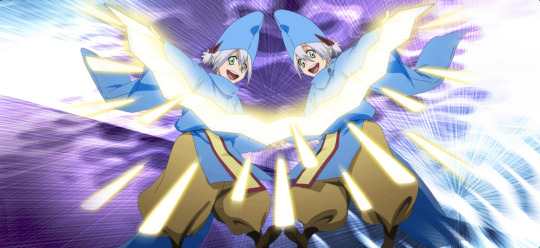
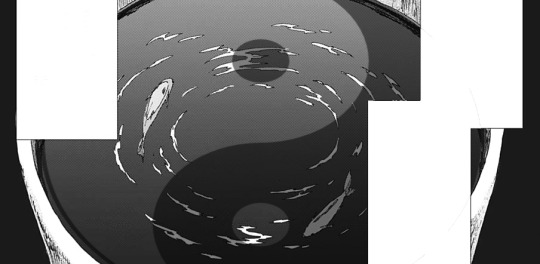
Then there's his shikai, Sougyo-no-Kotowari[双魚理] which reads "PairFish's Reason/Logic/Natural way of things." (sougyo-kyu[双魚宮] is the Japanese name of the constellation Pisces.) It appears to be an allusion to daoism/onmyodo, and the yin-yang diagram of balance, and this theme gets built upon by other contextual information like the zanpakutou arc's designs borrowing from onmyoji, and Ukitake's presence in conjunction with fish imagery and metaphor in the Jaws of Hell arc.
The little preamble to that chapter, about the two fish in balance until one dies and then the other grows bigger, is itself synonymous with sougyo-no-kotowari: The Natural Order of Two Fish.
The release command [波悉く我が盾となれ]: "All Waves be my shield," [雷悉く我が刃となれ]: "All LightningBolts be my blade" is fairly straight forward and just evokes the image of a stormy sea, which actually seems to have surprisingly little to do with the rest of the themes in play? I mean sure, waves and fish and floating, but when the floating and fish are less than literal the waves and lightning without any additional reading feel kind of out of place?
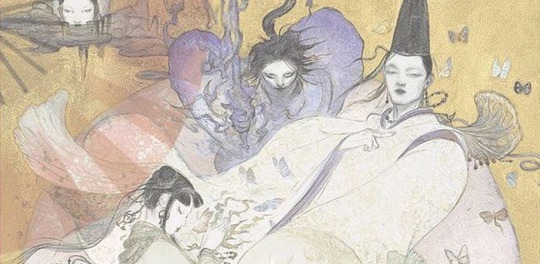
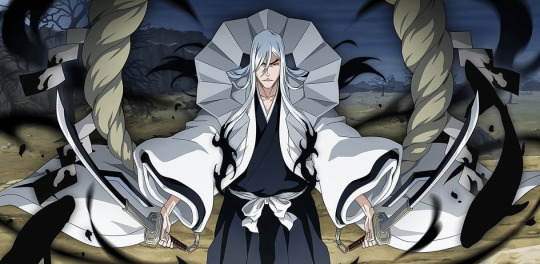
Of note: the onymoji was a prestigious class of sort of advisor in the japanese imperial court was at its peak in the Heian period, the long standing era of peace in ancient Japan that came just before the descent into the civil war of the Sengoku period. (Subsequently the onmyoji lost most of their power and clout during the waring states period as power shifted from the imperial court to the shogunate.) They were associated with and consulted for a wide range of things from medicine, to architecture, to city planning and meteorology, and divination, and perhaps most well loved by media, as exorcists. This ties into things like his beyond bankai form in Bleach Brave Souls where they opt for a more shinto purification theme, in either case making him fit something of a paragon role as Shinigami as ""cleansing"" hollows rather than destroying them.
Actually those shinto motifs all link to the recent addition of shinto themes in Mimihagi pretty directly, but I'll get to that in a bit...
It's worth noting that with Kyoraku's emphasis on a leisurely city life in the capital(Kyoto), and the onmyo mystic themes of Sougyo-no-kotowari, Kyoraku and Ukitake appear to both represent aspects of the Heian period, and thus cultures that predate the Sengoku period, and the rise of the samurai, lending to their role as two of the most senior members of the gotei 13.
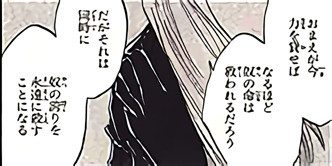
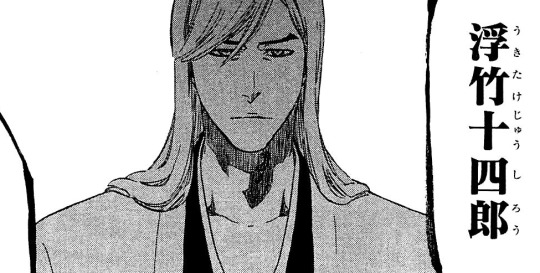
People often forget but technicaly Ukitake was the first captain we were introduced to, well before Byakuya showed up, the Captain title just wasn't present at the time. When Rukia has her flashback to a then uncertain event while Ichigo fights Grandfisher, it's Ukitake she's hearing speak and that we catch just a brief glimpse of the back of the head of. Like I said there were no captain ranks in the story a that point, so he just appears as long flowing white hair over an all black shihakusho. I think his hair was always meant to help him embody an element of balance between black and white, and thus the very series title: Bleach.
I think there was always an implicit siniste quality to the idea of "Balance" underlying the shinigami that Kubo tried to gesture towards with the general vibe of the Soul Society -v- Rukongai dynamics, the Shibas, that flicker of a twist in the Fullbringer arc that Ichigo just ignored, and even with a lot of the loose and ultimately unfulfilled themes he set up for the TYBW arc with Yhwach's plans for a new world and Juugram's Balance schrift.
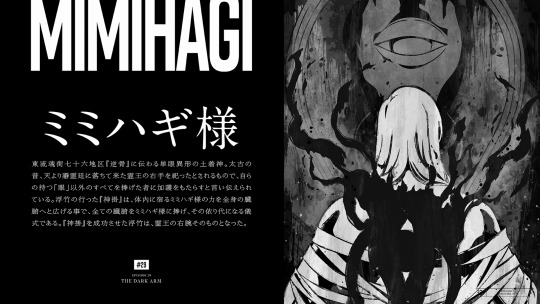
Oh I forgot the whole MIMIHAGI bit, despite teh being the whole subject of this week's episode:
東流魂街七十六地区『逆骨』に伝わる単眼異形の土着神。
An indigenous God of Grotesque/Suspicious Single-eye passed down in East Rukongai 76(th) zone "Sakahone(Reverse Bone)"
太古の昔、天より瀞霊廷に落ちて来た霊王の右手を祀ったとされるもので、自らの持つ「眼」以外のすべてを捧げた者に加護をもたらすと言い伝えられている。
(In)Ancient Times, From Heaven to the Seireitei the fallen right hand of the Rei-Oh is said to have been enshrined.
浮竹の行った『神掛』は、体内に宿るミミハギ様の力を全身の臓腑へと広げる事で、全ての臓腑をミミハギ様に捧げ、その依り代になる儀式である。
Ukitake's performed "Kamikake(God debt)" was, the power of MIMIHAGI dwelling in the body spreading to the whole of the viscera/entrails, offer up all of your entrails to MIMIHAGI-sama, it is a ceremony/ritual to become a Yorishiro*
『神掛』を成功させた浮竹は、霊王の右腕そのものとなった。
Ukitake succeeded at/with "Kamikake", he had become the right hand of the Rei-Oh.
*i don't have a more concise way to translate this... the translation listed run something like "object representative of a divine spirit"/" object to which a spirit is drawn or summoned"/"object or animal occupied by a kami" and it's specifically a shinto thing.
When you see big deified trees with the shimenawa ropes and shide paper talismans, those trees are yorishiro. or rather they're Shintai, because a Yorishiro is a thing capable of being host to a kami, the Shintai is after they've been deified. (And technically when you do that to a person it would be called Yorimashi, not Yorishiro. I don't know if that's meant to specifically dehumanize Ukitake or if its a broad enough term that it doesnt really make a difference. Although if you really wanted to stretch it you could argue that Ukitake is an object and not a person because he did die from his illness and the thing deified wasn't a "living" person it was a corpse. Which would very curiously position him as an inversion of Ichigo, who was human, "died" in that his soul was deliberately severed from his body, but continued to operate as nominally human while getting to dip a toe into the shinigami powers and the spirit world.)
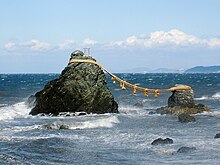
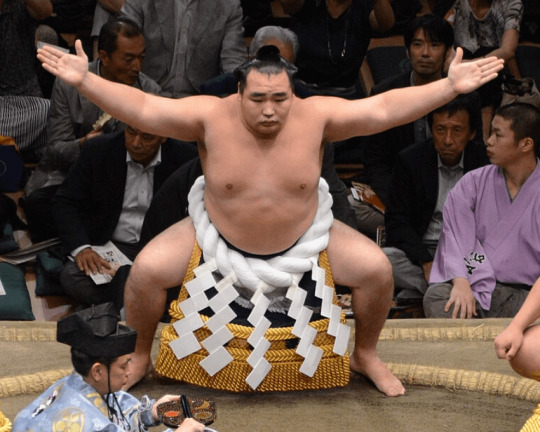

These little eye catch data cards really aren't giving us anything new huh?
#bleach#bleach meta#recap of junk i already posted years ago mostly#some of which i dont even know if id stand by today#but im too selfconcious to really reread my old shit#i know its bad#jushiro ukitake
56 notes
·
View notes
Text
Why I like rogueshipping/an analysis of Ronin and Okino's characters:
Ronin and Okino are a pairing I absolutely love and it's for a multitude of reasons. They have a lot of interesting potential as both friends and romantic partners. Its both the things that make them the same and make them different that allow them to mesh together in my brain so well, and I wanted to talk about it.
Similarities:
While they don't seem to have that much in common, when looking at their arcs side by side it becomes easy to find the similarities. Both of them had their futures held over their heads in order to be used against the ninja; if any two characters are gonna come to understand each other it's going to be them. Their arcs, however do lead to different outcomes for them. Ronin ends up more selfless by the end, but it may have ultimately doomed him, while Okino ends up learning to live more for himself which ultimately saves him.
The two of them were also set up to fail and suffer by those they were previously forced to serve; Ronin had his life threatened by soul archer who never actually intended on letting him go. Not only did it lead to his desperate actions in season 5, but being cursed in the first place lead to seemingly years of paranoia and desperation which sent him down a dark road. Okino was literally programmed to fail by Unagami, made to unwillingly lead players to their deaths over and over again which affected his mental health negatively. So much so he became unmotivated and stopped taking care of himself to a degree.
They're both freed by the end of their arcs, or at least presumably so in Ronin's case, and are given some form of a new beginning. Ronin no longer has to worry about Soul Archer or the cursed realm as a whole; the threat on his life and reason for being a thief are gone. He can move on and, when ignoring the immediate character assassination that occurs in the beginning of Skybound, continue to be better. During season 5 he doesn't exactly seem to like where his life ended up, so it's likely he'd would have chosen to keep being better if his character was granted consistency. Especially as he spends the rest of Skybound and seasons 7-10 being an ally. Okino broke free from Unagami's programming and is out in the real world, a world in which he can travel rather than being confined to a single place. He's able to build an entirely new life and help people as he so choses without being made to fail them, as we see in most of his appearances after Prime Empire.
Also they're both wandering and masterless samurai, it's literally Ronin's name.
Differences:
There are multiple aspects in which Ronin and Okino's differences could balance the two of them out. For starters one is chaos to the others order; Ronin would bring the excitement Okino wants to his new life and Okino would be someone who can keep Ronin more grounded. Ronin tends to just take whatever life throws at him as he used to living disorderedly, after all he's lived a life on the run. Okino on the other hand is much more used to a routine, having a sense of discipline, and being stuck in the same place while awaiting players who all inevitably meet the same fate. In a way they're exactly what one another need when it comes to their individual experiences. Ronin's even been all over Ninjago while Okino's completely and utterly unfamiliar with it, he could be some sort of guide to Okino like Okino was to others.
I touched on this a bit in the similarities section but their arcs lead them towards different types development. One of selflessness and one of selfishness, both instances end up being healthier for them. Okino no longer hinges his self worth on how well he can serve others and instead he starts to live for himself. Once Ronin's less of a self serving loner and gets to be an ally, not only does he seem happier also a bit more relaxed in his demeanor. This makes sense as he's mentioned never having a support system before; we see him to be both better mentally and as a person when he's able to be on friendlier terms with the others. I think this is best shown with his characterization throughout dotd and season 7, where he ends up spending the holiday with jays family and then is trusted enough to help the ninja move into the temple.
Gonna leave this here cuz I don't have much more to say. Anyway, love this ship, thank you for coming to my ted talk. They're gay, goodnight.
#lego ninjago#ninjago#ninjago ronin#ninjago okino#ronin kognito#ns5#prime empire#ronin x okino#rokino#rogueshipping#ninjago rogueshipping
21 notes
·
View notes
Text
Yeah, Breaking Bad is great or whatever, but does it have David Warner in spoon-headed lizard makeup psychologically terrorizing my literal dad, Jean-Luc Picard, who then closes out the episode admitting that he broke under torture in a scene that would be unthinkable for almost any other heroic protagonist but shows an incredible vulnerability that grounds his character in humanity despite the fact that he exists in an outer space world of mid-century thought experiment morality plays? Yeah, I didn’t think so. Sounds like Breaking Bad might suck actually, I guess. I don’t know, I’ve never watched it. I have, however, watched the cast of Deep Space Nine play space Jumanji at least thirty times in my life, and I’m pretty sure that was the right choice. And considering the sheer numbers of just how much Trek there is out there — 80 episodes of the original run, about 175 each of Next Generation, Deep Space Nine, and Voyager, a hundred miserable hours of Enterprise, and another 200 of the current gen stuff — there are more bad episodes of Star Trek than there are good episodes of pretty much anything else. Don’t get me wrong: that never overshadows the good stuff, which is often truly phenomenal. Over the past 60 years, Trek has produced not just some of the best science fiction that’s ever been made, but some of the best television ever made, full stop. You can pick any award-winning episode of any prestige streamium entertontent with a budget in the millions and it would be hard pressed to even hold a candle to “Chain of Command,” or “Balance of Terror,” or “A Taste of Armageddon,” or the episode of Deep Space Nine where they play baseball against the Vulcans.
Masterless Samurai
27 notes
·
View notes
Text
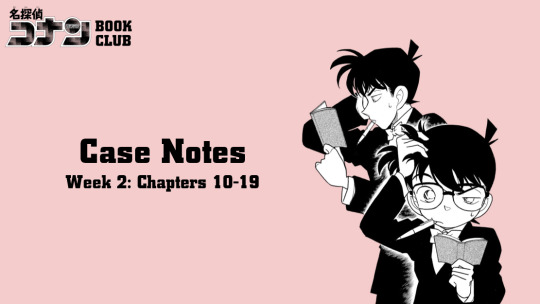
Has everyone been enjoying their reading?
This week we have another issue of Case Notes, though this one is a little shorter. This is also where we run into our first problem with keeping things spoiler-free, but do rest assured we'll follow up on some of the discussions within when it comes up again!
Without further ado, let's see what we've got for this week.
1) Japanese Culture
There are a couple of events in the volume that I thought might be worth expanding on from a cultural perspective.
Fire Festivals
The first case of the volume features a fire festival in Akaoni Village, Gunma. First, it should probably go without saying that no village in their right mind would go calling themselves "Akaoni" (Red Oni, a demon-esque creature from Japanese myth), so this is a purely fictional location. The red certainly does bring to mind the fire, though.
Speaking of the fire festival, these are very much real. Japan boasts a number of various fire festivals, some on much larger scale than others. I struggled to find one specific fire festival that this case was referencing, so it's more likely just another variant of the many you can find throughout Japan.
It's a lot more than I could possibly get into for something of this scope, but to jump start any further research if you're interested:
There are arguments for which of the older and larger scale festivals count in the so-called "Three Great Fire Festivals of Japan," but common candidates include:
Kurama Fire Festival (Kyoto)
Nachi Folding Fan Festival (Wakayama)
Oniyo (Fukuoka)
Tengu Firewalking Festival (Hokkaido)
Nozawa Onsen Fire Festival (Nagano)
There's also the Sagicho Fire Festival, which is held at shrines nation-wide in mid-January to burn down their old New Year's decorations and pray for good fortune in the new year.
Japanese Education: Rounin
In the final case for this week, we hear about a pretty troubled family (to put it lightly). The son, Akio, gets a scolding from his father for once again failing his college entrance exams. Someone like Akio, who skips over entering university for multiple years, is often called a rounin (浪人).
People can be rounin for many reasons. Like Akio, they could have failed their exams one or more years in a row. As Japanese college entrance exams are a combination of national AND school-specific exams, a person who passes for their contingency school but fails for their first-choice school could opt to become a rounin to try for next year's exam. Still others choose to become a rounin without even taking a single exam, choosing instead to take a break from schooling or prepare for a better learning environment through a move.
And as students are usually limited to picking one (1) public and one (1) private school to test for in addition to the nation-wide center tests, since public and private school tests tend to each all be on the same day, the stress and pressure for getting into schools can really wear a young student down.
Historically, the word rounin more broadly meant a drifter that had cut themselves off from their home and/or family to aimlessly travel from place to place. The word eventually came to be associated with masterless samurai (which is also the definition many anime fans are also more familiar with, I would think), whether it be through the master's death or the samurai's banishment. As the code of honor dictated that samurai who lost their masters were supposed to commit ritual suicide, those who didn't were looked down upon.
In the modern day, then, students without a "master" (enrollment in a university) similarly carry that shame as rounin.
2) Japanese Language Bonus
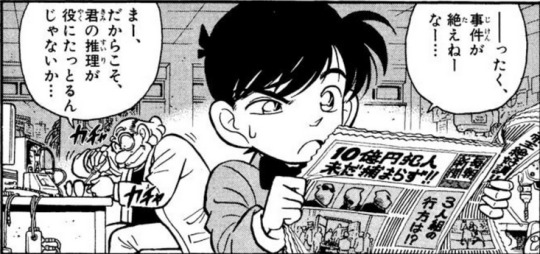
Small one this week!
At the beginning of the One Billion Yen Robbery Case, we can see Conan reading a newspaper. Though it's probably immediately obvious the front page of the newspaper is covering the trio of robbers, you might notice the horse on the back page.
The headline seems to read 帝王絶好調: Teiou in Top Form!
"Gokai Teio" is the name of the horse that provides a key hint in locating our missing man... Which means this first page of the chapter gives us not only a big hint as to what the crux of this case comes down to, but also an indication of what our first big hint for moving the case forward will be!
I should probably also note that Gokai Teio is likely a nod to Tokai Teio, a fairly famous Japanese thoroughbred race horse from the early 1990s.
3) Short & Sweet References
Rapid-fire round of a couple of references and nods!
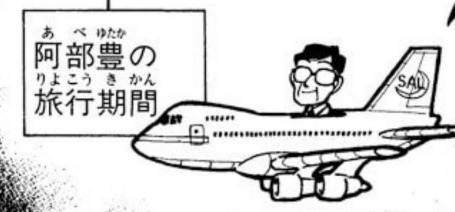
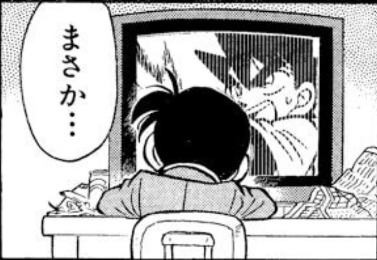
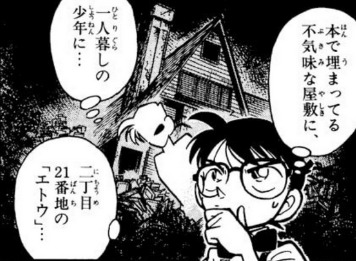
The airline Yutaka Abe flies on is a nod to the very real Japan Airlines (JAL). The general crescent silhouette is also somewhat similar to the shape of the bird's wings on the real logo. (Yutaka Abe, let it be known, is also a very old friend of Gosho's that he served as an assistant to for a while!)
Yaiba real! This shot is from pretty damn late in the manga (like, final confrontation late, if memory serves). It was never actually animated in the first Yaiba anime, though... maybe it will be this time around.
Japanese addresses often use a string of (usually two or three) numbers to narrow down where any given building is located. The Kudo household is second district/block, 21st lot, and would be formatted as 2-21. Which is to say that Shinichi lives at 221 B(eika City).
4) Put A Pin In That
Here's where I must admit ahead of time that, at this moment, this section will be full if incomplete information in an effort to avoid full spoilers. What they are, however, are events or characters whose most interesting bits of trivia or info are revealed over a significant length of time. Rather than choose between dumping it all out now or waiting to discuss it until everything is on the table, I'd rather bring attention to it for now and slowly add more info as we progress along!
Let's start simple.
Conan's Classmates
We've been introduced to Conan's elementary school classmates Genta, Mitsuhiko, and Ayumi - the "big kid," the "thin arrogant one," and the "cute girl." Gosho himself has joked that as a template, they basically fit the recurring characters of Doraemon (Gian, Suneo, Shizuka), even if their actual personalities differ greatly. He then continued to joke that you would think this would put Conan in the Nobita position, when - if anything - the kids are closer to Nobita while Conan is more like Doraemon... And they were somewhat designed as a group to easily drag Conan into trouble.
There are various theories as to where the kids get their names, but we don't have any official confirmation at present. The most common theory among fans falls in line with similar naming conventions for our core cast, though, so I will share those here:
Genta Kojima (小嶋元太): Mystery writer Hajime Komine (小峰元), due to the kanji used.
Mitsuhiko Tsuburaya (円谷光彦): Mystery writer Yasuo Uchida's reporter character, Mitsuhiko Asami (浅見光彦).
Ayumi Yoshida (吉田歩美): Mystery writer Ayumi Kitagawa (北川歩実).
There are two other aspects to these kids that are worth discussing, and one of them might be obvious. But for now, we save that for another time.
Akemi Miyano
Given the information revealed in this particular case, you can safely assume Akemi has a level of significance. But this case's anime adaptation is also worth discussing, given TMS's choices in the early run of the show led to some... interesting effects in the source material.
In brief, there are a couple of stand-out early cases that involve our mysterious organization that TMS chose to adapt without any organization elements. This had the secondary consequence in this case of actually keeping Akemi alive at the end of the corresponding anime episode, 'The Strange Person Hunt Murder Case.'
The problem? She needs to die. The anime rectified this with a loose retreading of this case over 100 episode later that otherwise ignores the events of the previous episode, but that initial decision led to two separate but somewhat related consequences in the manga. What those are, and how they're related, is something we'll get into when it becomes relevant later.
And that's all for now. Once again, please feel free to add on your own bits of trivia or observations if you have any!
13 notes
·
View notes
Text
Kinda carthartic to be reading early Usagi Yojimbo again, a comic from right before the mainstreaming of anime in the west, where you can see stuff like
"I must consult the <daimyo> (feudal lord)!"
"Oh no! My <daisho!> (two sword set)"
"I am just a humble <ronin...> (masterless samurai)"
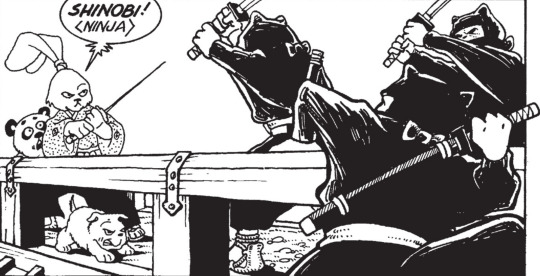
13 notes
·
View notes
Text
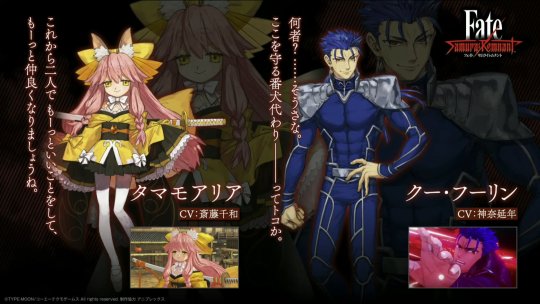
Tamamo Aria and Cu Chulainn are masterless rogue servants in Samurai Remnant who can be recruited to help Iori.
265 notes
·
View notes
Text
My Super Sentai fanseries masterpost, part 2: crowdsourced colors
In alphabetical order. Entries with bold titles are ones I've put the most thought into fleshing out, but I'd happily yap and answer questions about any of them (yep, again). For these, I invited people on a forum to give me sets of colors and other stipulations that I'd challenge myself to come up with teams for, since I wanted to rely less on the red-blue-yellow-green-pink standard.
Angoka Sentai Stealthman (Encryption Team Stealth-man) - Fifty years ago, a team of cyborg ninjas fought a high-tech crime syndicate, but their existence was covered up. Now when their enemy returns, a new team must uncover the secrets of the past and take up the mantle (early computers and ninjas) (red, blue, yellow, green, pink, robotic white, evil black, 80s-90s scifi and ninja themes)
Chosa Sentai Tanteiger (Investigation Team Detective-ger) - A team of genius private detectives investigate crimes caused by otherworldly criminals, and the whole show homages film noir aesthetics (detectives) (red, yellow, green, blue, pink, orange, violet, but mainly gray suits)
Gokuhi Sentai Uragiranger (Top-secret Team Betrayal-ranger) - Aliens from an invasion force decide to go rogue and fight for Earth instead, but are driven by their own ambitions rather than justice (aliens/monsters) (red, blue, yellow, pink, green, but mainly black suits, antiheroes)
Hayashi Sentai Meisaiger (Forest Team Camouflage-ger) - Descendants of a ninja clan protect their sacred forest from the servants of a demon lord (trees and ninjas) (red, pink, white, green, purple)
Hitori Sentai Hououger (Firebird Team Phoenix-ger) - As a phoenix dies in battle with a great evil, he entrusts his power to a team of humans so they can continue the fight (birds and fire) (red, pink, white, orange, violet, gold 6th)
Hyogaki Sentai Yajuman (Ice-age Team Beast-man) - University students are recruited by a frozen prehistoric sage to fight machines turned monstrous by the ghosts of a dinosaur civilization (cavemen and prehistoric beasts) (red, violet, orange, brown, yellow, cyan, prehistoric megafauna theme and ice-blue armor)
Jonetsu Sentai Shumiranger (Passion Team Hobby-ranger) - A group of hobbyists unite to fight a corrupt corporation that seeks to drain the joy and passion from peoples' lives (hobbies) (red saber, blue violin, black swallow, green willow, pink pig, gold trinity)
Kamimono Sentai Isanger (God-beast Team Legacy-ger) - The heirs to elemental tribes that have watched over the world in secret unite to end the war between their tribes and the dark force that masterminded it (elemental beasts) (red, blue, green, yellow, black, silver, tribal theme "a la Gransazers")
Kogane Sentai Renkinger (Golden Team Alchemy-ger) - The students of an alchemist fight monsters created by her rival while also trying to overcome their personal flaws (alchemic elements) (red, blue, yellow, green, pink, but mainly golden suits)
Ronin Sentai Buraiger (Masterless-samurai Team Rogue-ger) - In a setting like medieval Japan with a tokusatsu twist, a ragtag band of outlaws fight against an oppressive shogunate (samurai) (blue leader, red, yellow, pink, black, silver 6th)
Senritsu Sentai Johinger (Melody Team Elegant-ger) - A princes from a world powered by music gathers people with songs in their hearts to protect earth from the evil general who conquered her homeland (classical music) (red, yellow, pink, white, black, orange sixth, music theme)
Tamashi Sentai Tenshinger (Soul Team Angel-ger) - In a dark fantasy world ravaged by demons, a rogue angel descends and recruits heroes to fight back (angels, knights and fantasy beasts) (red, blue, yellow leader who upgrades to gold, green, black, knights vs demons theme)
Tokkan Sentai Kiheiger (Charge Team Cavalry-ger) - A post-apocalyptic biker gang become motorcycle-riding knights to fight a warlord's cybernetic army (bikers, knights and mythical beasts) (red, female blue mermaid, black, male white pegasus, pink)
Tokuten Sentai Playranger (Score Team Play-ranger) - Champion gamers in different genres are recruited to stop a game villain who's escaped to the real world (videogames) (red, blue, green, violet, orange, pink, white, black gold, videogame theme)
Tomerarenai Sentai Koshiger (Unstoppable Team Photon-ger) - A team of racers competes in the interplanetary Galaxy Prix against rivals both honorable and unscrupulous (futuristic cars) (red, blue, yellow, green, pink, black, gold, silver, white, white is the true leader)
Yume Sentai Yoruger (Dream Team Night-ger) - High school students who've been troubled by nightmares become heroes to fight the monsters from their nightmares when they appear in real life (nocturnal animals) (red, blue, black, violet, white, gold sixth)
#super sentai#super sentai oc#toku#tokusatsu#tokusatsu oc#angoka sentai stealthman#chosa sentai tanteiger#gokuhi sentai uragiranger#hayashi sentai meisaiger#hitori sentai hououger#hyogaki sentai yajuman#jonetsu sentai shumiranger#kamimono sentai isanger#kogane sentai renkinger#ronin sentai buraiger#senritsu sentai johinger#tamashi sentai tenshinger#tokkan sentai kiheiger#tokuten sentai playranger#tomerarenai sentai koshiger#yume sentai yoruger
8 notes
·
View notes
Text
The Europeans and globalists see the Trump Administration as a threat in the effort to create transnational governance systems. German diplomat Christoph Heusgen became emotional in responding to Vance, declaring “It is clear that our rules-based international order is under pressure. It is my strong belief that this more multipolar world needs to be based on a single set of norms and principles.”
American politicians and journalists quickly added their voices of condemnation. CBS anchor Margaret Brennan confronted Secretary of State Marco Rubio to suggest that Vance’s support for free speech was outrageous because he was “standing in a country where free speech was weaponized to conduct a genocide.” Brennan’s bizarre suggestion that free speech contributed to the death camps was amplified by Rep. Seth Moulton (D-MA) who accused Vance of using “some of the same language that Hitler used to justify the Holocaust.”
After the Munich speech, some of the leading anti-free speech figures in the world gathered at the World Forum in Berlin. I was one of the few speakers from the free speech community at the conference that declared “A New World Order with European Values.” Various Americans were present to reaffirm the worst about the United States as a nation descending into tyranny.
The two most celebrated figures were Bill and Hillary Clinton, who also criticized the current Administration.
The appearance of Hillary Clinton was particularly chilling for the free speech community at the Forum. Clinton has been unrelenting in her attacks on free speech and is a favorite of globalists who want to create this new world order. After Musk bought Twitter with the intention of restoring free speech protections, Clinton called upon the European Union to use its infamous Digital Services Act to make Musk censor her fellow Americans. She has also suggested arresting those spreading disinformation.
The EU did precisely that and is now threatening Musk with confiscatory fines unless he resumes the censorship of Americans and others.
After returning from Berlin, I testified in the Senate Judiciary Committee and warned about the building threat to free speech from the use of the DSA.
Since then, the EU has moved forward with its aggressive campaign against U.S. companies and figures who are not yielding to their expansive censorship demands.
They continue to rely on Americans to make the case against the United States and they are finding a long list of eager experts.
Many are disgruntled Democrats after the election or “disinformation experts” left without positions or grants after the start of the Trump administration. Unemployed censors now roam the Earth like rōnin, or masterless disgraced samurai. They are finding opportunities in Europe where free speech in a virtual free fall.
9 notes
·
View notes
Text
Onto Hisui, the kinda gen 8, gen 4, almost gen 9, maybe gen 8.4.2.5.7 starters?

So I'm not going to do a full in depth review on each base starter again and their mid evolution- all you need to know that it is a sheer fucking coincidence that they picked all three of my favorite starters to be the starters for this gen. What a wild concept. Like Galar's starters sucked so bad, they had to call in back up from the previous gens just to keep the entire gen from becoming a trash fire- even Rowlet, who barely hung its hat up after gen 7 and Isle of Armor.
And saved they did. This crew is pretty strange and unique, but not unwelcome, and not unseen before- just mainly in fan games. The concept of taking 3 starters that normally have zero to do with each other and unifying them with a shared concept and variant evolutions is just... peak creativity. Something new out of something old without a gimmick that can be easily discarded, just brilliant.

I can do a group review of the final evolutions, because GOD that's such a fun idea and they look so cool. So how do you unify three random starters? You tie them together to the place they are roaming, aka the wilds of Hokaido circa 200 years ago. A ronin, a corrupted samurai, and what I think is either a priest or a yokai. Just brilliant stuff here. The colors invoke an timely view of the old world, and each sort of have their own level of mysticism about them, and have shared hues of red- almost like maple leaves, blood, or a blood moon. Or, more specifically, DEATH in various aspects, which Hisui isn't shy about touching. God, I love these guys. I really do. 9.5/10.
Individual reviews under the cut

Hisuian Decidueye isn't quite as cool as regular, but the only thing that's really throwing me off is the smaller wings in comparison to normal. Otherwise, this is a fantastic re-imagining of Decidueye that does something that hasn't been done with other grass starters: A *fall* color scheme. In the whole "Death" scenario, the leaves are dying, as is the age of Samurai, which would be somewhere around the same time period that Legends Arceus would take place in, and being a Ronin, Decidueye would essentially be a traveling *masterless* samurai. Ironically, considering the death motif, it leaves the ghost type behind and embraces the FIGHTING type- as if he's going down swinging while he's still got fight left in him, or he's fighting to survive the Hisuian wilderness. There's a lot that could be said to really amp up why I love this guy, and I'm still waiting for a good excuse to use him some day. 8/10.

Hisuian Typhlosion didn't immediately click with me until I saw it in action and I saw it in artwork. It's very similar to regular Typhlosion in which you need the proper angle to truly appreciate it, and appreciate it I do after using it as a transfer starter for my run in Kitakami. If the Hisuian starter trio are based around death, you can't get much more death related than being a ghost. Specifically, Hyphlosion could based on the "Night Parade of 100 Demons," particularly with its move "Infernal Parade," but also could have inspiration from old Japanese priests, particularly from the bead-like necklace of fire around its neck. Interestingly, as a ghost, it's particularly benevolent and purifies spirits with its flames before guiding them to the next world- according to the dex, anyway. Any way you look at it, it's a very different take to normal Typhlosion, but it's a pretty valid and cool one imo. The wispy flames are super unique and mesmerizing to watch. The overall purple coat and lighter tanned belly may in fact be a reference to Typhlosion's old shiny palette in GSC, which sported a similar coloration. I do with the ears were more perked up and that it was easier to see the cooler side of it, but honestly I just like this sleepy boy no matter what. 9/10, Typhlosion was my first Pokemon and it'll always have a spot in my heart no matter what it looks like, and Hyphlosion came just when it needed to to save fire starters.
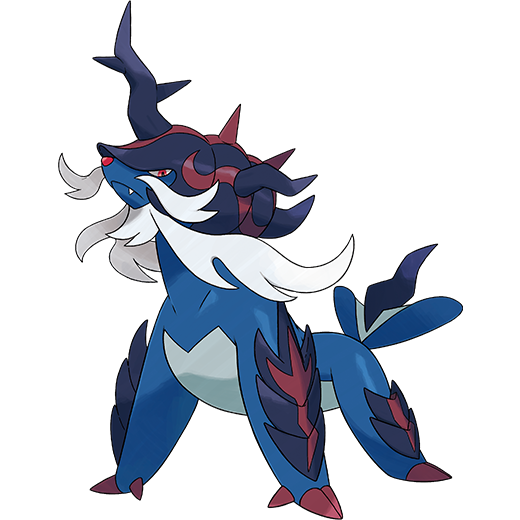
Hisuian Samurott is probably my favorite starter of all time, now, because it basically just improves everything stylistically I love about OG Samurott and takes it even further. It is a little strange that Samurott, an already Japanese inspired Pokemon, gets a more Japnese form, but I'll take what I can get considering the state of starters at the time. This Samurott may be based on the *corrupt* Samurai, those that get drunk on power and demand others do as they say, or *die* in the streets- hence the dark type, and hence why red streaks line it's black armor- representative of blood shed by civilians that dare go against its rule, and further implicated by its signature move- Ceaseless Edge, an onslaught of slices without mercy. I think there could also be a further influence from the infamous Muramasa sword mythos- that is, swords forged so well by a single blacksmith that people claimed they were possessed or forged by *demons*, because of how well and how many they killed. Dark is the "evil" type in Japan, after all. Regardless of all of that, This is seriously such a cool Pokemon design and an ideal starter design overall, because it can move on land and in water quite decently. I think if I have a gripe, a singular one, it is simply that I would prefer black claws, but red is a fine enough color as it is. That, and maybe I'd wish it wasn't so slow. 9/10, my favorite starter at the moment, so much so I purposely bred for a shiny to use again in Blueberry Academy, and it came back just when needed to save water starters from being ugly.
God, I love these guys. I hope the ZA trio turns out as good as these guys.
Next and finally will be the SV starters... Unless anyone wants me to purposely do one for something like Pikachu, Eevee, and the Eeveelutions for Orre.
#pokemon#dd reviews pokemon#pokemon gen 8#hisui starters#cyndaquil#rowlet#oshawott#hisuian typhlosion#hisuian samurott#hisuian decidueye
8 notes
·
View notes
Note
Possibly a silly question, but Yume is very much associated with the phoenix from what I understand? Given Zenos' dying and returning from the grave in the MSQ, is there some link between the concepts of death and rebirth in their stories and characters? Is this something you've already explored? Or is it incidental to their relationship?
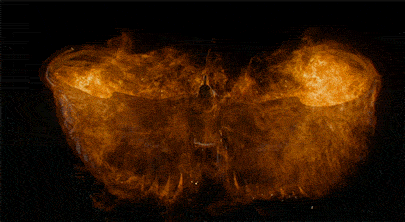
Ohhhh this is a very good question!! I’ll be happy to explain Yume’s symbolism with the Phoenix and how it also ties into her relationship with Zenos as well.
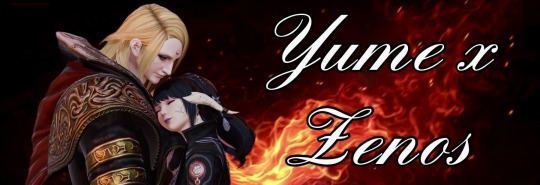
So to give a bit of context, Yume’s association with the Phoenix is something that goes back to her history before she arrived in Eorzea and became an adventurer. After she was stopped by her Daimyo father when she attempted seppuku, Yume was banished from her homeland, never to return and she was stripped of all her titles and status.
Though Yume had not been successful in taking her own life, her banishment proved to be the beginning of a new life for her, as forever after she would be known as a ronin, a wandering masterless samurai. Thus, she marked the beginning of this new life with a tattoo of a phoenix on her back, which I have a reference for what I imagine it to look like below: 👇
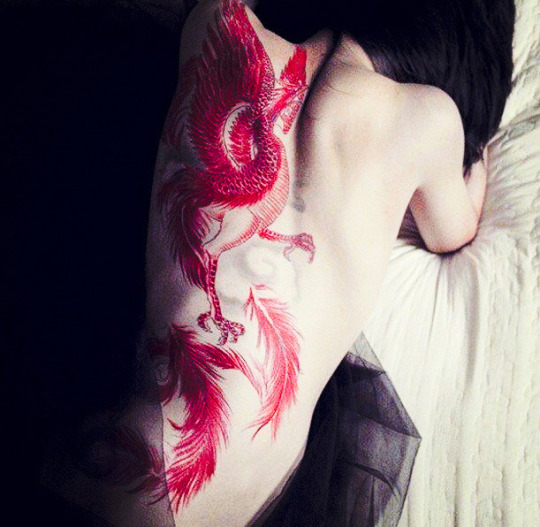
Another theme that surrounds the Phoenix is the idea that fire not only is a force of destruction but also of healing, a cleansing of the soul, and rebirth, and I believe both Yume and Zenos have this symbolism in common, as after each “rebirth”, they have been transformed from the people they once were, and especially in their latest rebirths, after their final clash in Ultima Thule at the end of EW 6.0.
Both Yume and Zenos have had literal and metaphorical rebirths throughout their lives, as Yume had her metaphorical rebirth detailed above, and she literally died and came back to life after her battle with Zenos in Ultima Thule, while Zenos has now literally (and metaphorically as I write it anyway) died and has been reborn twice, once after he took his own life after his battle with Yume in Ala Mhigo, and once again in Ultima Thule.
As they have both been through a literal and metaphorical rebirth after Ultima Thule, they are starting yet another new life, but this time they are walking their paths together. They have finally arrived at the understanding that the emotions that they have been feeling for one another is in fact love, and no other person they have ever met has been able to fully understand them except for one another. After EW, they have been reborn from the ashes of their pasts as enemies, and they now live together as lovers.
I think that’s the extent of how much I can explain Yume and Zenos’ association with the Phoenix without just babbling on incoherently, so I’ll end it here. Thank you so much for the ask @mimble-sparklepudding!!! If you or anyone else has any other questions about Yume and/or Zenos, please don’t hesitate to ask! 💖
#asks and replies#zenos x wol#wol x zenos#yume aino#oc: paint it black#yume x zenos#ship: bad romance
13 notes
·
View notes
Text
One thing I keep asking myself now in relation to Ahsoka is: does Filoni like samurai films? Does he have thoughts about any of them? And if he does, why isn't any of it in the show?
For contrast, regardless of anyone's views on The Last Jedi, Rian Johnson engaged with the genre. Rather than just pull from things that had already been used by Star Wars, he explored. He understood the themes of Rashomon and Three Outlaw Samurai, and understood why those films work. You can tell that he has a relationship to and appreciation for the material. He borrows Rashomon's "three versions of the story" and echoing that film, the truth lands in a murky in-between which exposes a critical error by a character, but also incites them to an act of real moral courage. The energy of Three Outlaw Samurai, meanwhile, comes through in the slovenly DJ and the frantic, scrappy melee combat.
In the same way, Andor and Rogue One are applying more than just the aesthetics of espionage thrillers and modern war movies to SW (also they understood what those aesthetics are for). For that matter, TCW's Umbara arc used Vietnam War film nods pretty well.
The Mandalorian, I think, has increasingly lost the sense of having anything to say with its Western elements, and in Ahsoka and its repeated riffing on samurai movies, it's even more frustrating. Characters pose with their lightsabers in ways that mimick the likes of Toshiro Mifune, there are musical echoes, the framing vaguely evokes those films at times... yet it stops there, at the surface. They're not doing anything more than The Jedi was when borrowing frames from Yojimbo back in Mando S2. It begins to feel solely performative, doing homage to the things which influenced Lucas because they influenced Lucas (and missing the fact that Lucas adored these films because they are terrific works of art).
And that doesn't even get into how much of Kurosawa's actual style isn't imitated at all here. Kineticism, the thing which the master did better than basically anyone else, is pretty much absent, let alone his dramatic use of weather and smoke.
The reason I'm harping on about this is that Filoni and his writers room could really have made hay if they dug into these stories, because they would've found themes that informed the story they were ostensibly setting out to tell. Plenty of Kurosawa films are about ronin (sometimes left masterless by a war that destroyed their clans) and their ambiguous, often fraught relationships with the rest of the world.
Seven Samurai, Yojimbo and Sanjuro all get into this stuff. The former also asks searching questions about what place there is for a warrior in a land at peace, which Masaki Kobayashi's Harakiri explores through a much darker and more cynical lens. All of that feels extremely applicable to an Ahsoka who is meant to be scarred by her experiences and feels a gap in her life, where so much of the Jedi's traditional role as peacekeepers and protectors was meant to go. (There is a similar struggle at the heart of David Kirk's wonderful Musashi Miyamoto novels).
But instead we end up with this very shallow attempt at doing homage, which comes out as rather disrespectful in itself when you break it down.
68 notes
·
View notes
Text
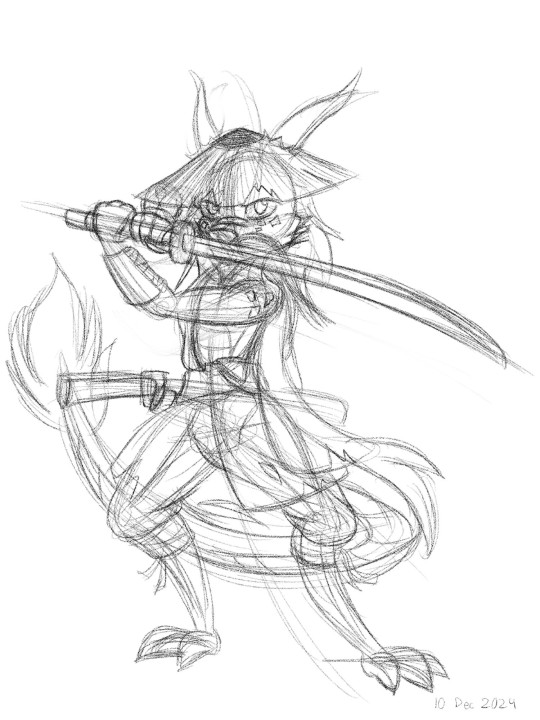
I've been brainstorming a DnD setting with a large focus on dragons and their kobold clans. One aspect of this setting is that kobolds without a dragon to serve are kinda similar to Japanese ronin, or masterless Samurai. This guy isn't part of the setting but I thought it's cool
8 notes
·
View notes
Note
Are Leo, Raph and Donnie going to know Ronin is a Mikey because he tells them, or are they going to have to work it out through process of elimination? I’ve never read the Last Ronin (and I never intend to - I want my heart to stay unshattered) so I don’t know how he thinks of or refers to himself. Is it going to be weird for him to be called/referred to/thought of as Mikey again?
that is to be seen (wonk)
I will give you ronin canon comic insight though, Mikey is mainly called ‘Mike’ ‘Michelangelo’ the big boy versions of Mikey, (I think he is referred as Mikey once or twice in flashbacks or by April) he calls himself A ronin (masterless samurai) but never outright makes his name that.
You’ll have to wait and see how Ronin Mikey plays out :))
#ask butter#b.e.n.t ask#always feel free to ask about The Last Ronin I have a hardback with a thousand sticky notes on all pages
91 notes
·
View notes